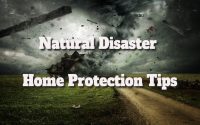Camouflage Offers Optimal Security For Your Property
Camouflage Offers Optimal Security For Your Property
Many people find it easy to keep their home safe by acquiring a self-contained alarm and security system.
However, there are several disadvantages to using this security strategy. Many people forget to turn on the system before leaving the house, rendering it useless, and they are usually placed in a location where burglars and miscreants can see if they are on. Fortunately, these types of alarms are only one of the options.
There are numerous ways to secure your belongings without breaking the budget or installing a system. Camouflage is a practical approach to protecting your property.
You can use proper camouflage if you live in a wooded area with bushes and shrubs around your house. Companies like Camoclad sell camouflage films.
These can be used in a variety of applications. If you have an outdoor shed or storage area, you can hide it by painting it in a camouflage that fits the rest of your property.
If you truly want to hide your complete shelter or house, different camouflage paints can be put on windows! However, in most circumstances, this will not protect your belongings.
However, you are not required to use camouflage paint or designs to conceal the goods you wish to protect. There are several methods for concealing objects and confounding viewers.
Key hiding stones, for example, are an inexpensive way to keep spare keys and small valuables secure. Aside from stones, various materials can be utilised to conceal objects. Replica books can be used as gun safes and phoney barbacoa containers for cash and jewellery.
If a burglar gains entry to your home, there are several ways to disguise your safes and other valuables by making them appear to be other uninteresting items.
Protect your firearms, money, and essential documents from robbers with a safe. But they choose them because most consumers don’t know that smaller, less durable safes can be pulled away.
Make it look like a speaker, a bookshelf, or whatever you like.
You can keep your home safe by concealing or placing a security camera in an inconspicuous position.
But how does one conceal a surveillance camera? Which camouflage works best, and where should it be hidden?
Camouflaged security cameras are less likely to be tampered with or destroyed by potential attackers. Invisible to the naked eye, hidden cameras can catch would-be intruders red-handed and expose their genuine motives.
Most people want to conceal a security camera rather than display it prominently.
A hidden camera is inconspicuous and difficult for potential intruders or hostile individuals to tamper with or delete.
Adding a camera to your home does not have to change its appearance.
You only need to think about where to place the camera and how you’ll blend it into the space.
A hidden camera may also be helpful if you have house guests or employees at work. They will feel more at ease and act more naturally as a result.
Bear in mind that you want to provide security rather than gossip.
As a result, you must carefully consider where and how you will install your inside and outdoor security cameras.
People set up hidden exterior security cameras for a variety of reasons.
Whether you aim to catch would-be trespassers (human or otherwise) or protect your abandoned possessions, you should carefully consider how to mount your camera.
Outdoor security cameras can be easily camouflaged, but you must consider where you want to set them.
Think about the effects of the location and both natural and artificial lighting on your film.
Consider the angle from which you want your camera to collect images. Consider placing it beneath your door or on your porch if you’re on a tight budget.
If you can install multiple cameras in front of your home, a location facing the street may also be beneficial.
A camera facing your garden or pavement is popular due to its fantastic viewing angle.
A security camera can be cleverly hidden in a birdhouse or near plants or shrubs.
It’s straightforward, but you’ll need to check now and then to ensure that no leaves are blocking your vision or that birds have landed on the lens. The camera can also be fixed to a post or a light fixture.
It will stand out less in this manner and may blend in with the lights.
It would be preferable to avoid positioning your security cameras in questionable situations, such as directly on a neighbour’s land.
This cannot always be avoided, but there is no cause to be alarmed if it is not done intentionally. In this way, you can avoid legal problems during an occurrence.





